-
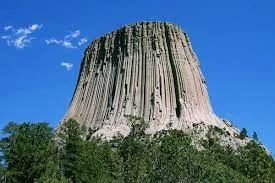 Devil's Tower in Wyoming was designated as the first national monument by President Theodore Roosevelt. The unique geological formation is a significant landmark and holds cultural and historical importance for Native American tribes in the region.
Devil's Tower in Wyoming was designated as the first national monument by President Theodore Roosevelt. The unique geological formation is a significant landmark and holds cultural and historical importance for Native American tribes in the region. -
 Theodore Roosevelt, the 26th President of the United States, was born on October 27, 1858, in New York City. He went on to become a prominent political figure, conservationist, and advocate
Theodore Roosevelt, the 26th President of the United States, was born on October 27, 1858, in New York City. He went on to become a prominent political figure, conservationist, and advocate -
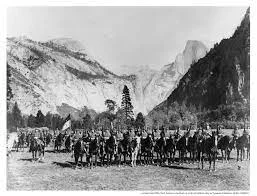 On October 1, 1890, Yosemite National Park was established, bringing the state-controlled Yosemite Valley and Mariposa Grove under federal jurisdiction. This marked a significant step in the preservation and protection of the natural beauty and resources of Yosemite for future generations.
On October 1, 1890, Yosemite National Park was established, bringing the state-controlled Yosemite Valley and Mariposa Grove under federal jurisdiction. This marked a significant step in the preservation and protection of the natural beauty and resources of Yosemite for future generations. -
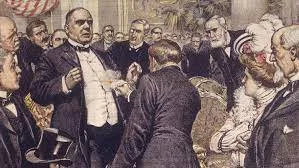 Theodore Roosevelt became the 26th President of the United States following the assassination of President William McKinley. This event marked the beginning of Roosevelt's impactful presidency, known for its progressive policies and trust-busting efforts.
Theodore Roosevelt became the 26th President of the United States following the assassination of President William McKinley. This event marked the beginning of Roosevelt's impactful presidency, known for its progressive policies and trust-busting efforts. -
 The Anthracite Coal Strike of 1902 was a significant labor dispute in the coal mining industry. It led to a national energy crisis as coal was the primary source of fuel for heating and industrial processes at the time. President Theodore Roosevelt intervened and facilitated negotiations to resolve the strike.
The Anthracite Coal Strike of 1902 was a significant labor dispute in the coal mining industry. It led to a national energy crisis as coal was the primary source of fuel for heating and industrial processes at the time. President Theodore Roosevelt intervened and facilitated negotiations to resolve the strike. -
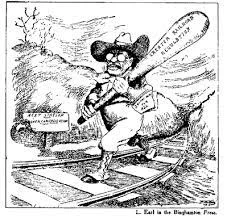 The Elkins Act was a U.S. federal law that aimed to address the issue of railroad rebates and unjust discrimination. It imposed heavy fines on railroads that offered rebates and the shippers that accepted them, thereby regulating the railroad industry.
The Elkins Act was a U.S. federal law that aimed to address the issue of railroad rebates and unjust discrimination. It imposed heavy fines on railroads that offered rebates and the shippers that accepted them, thereby regulating the railroad industry. -
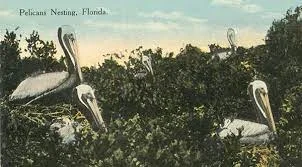 Pelican Island in Florida was designated as the first national wildlife refuge by President Theodore Roosevelt. This marked a significant milestone in the conservation and protection of natural habitats and wildlife in the United States.
Pelican Island in Florida was designated as the first national wildlife refuge by President Theodore Roosevelt. This marked a significant milestone in the conservation and protection of natural habitats and wildlife in the United States. -
 Theodore Roosevelt won his first full term as President of the United States in the 1904 election. His presidency was marked by progressive reforms, trust-busting efforts, and a focus on conservation and environmental protection.
Theodore Roosevelt won his first full term as President of the United States in the 1904 election. His presidency was marked by progressive reforms, trust-busting efforts, and a focus on conservation and environmental protection. -
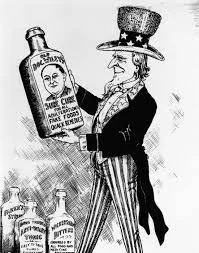 The Pure Food and Drug Act was a significant piece of legislation aimed at regulating the food and pharmaceutical industries. It aimed to protect consumers from adulterated and misbranded products, leading to the establishment of the Food and Drug Administration (FDA).
The Pure Food and Drug Act was a significant piece of legislation aimed at regulating the food and pharmaceutical industries. It aimed to protect consumers from adulterated and misbranded products, leading to the establishment of the Food and Drug Administration (FDA). -
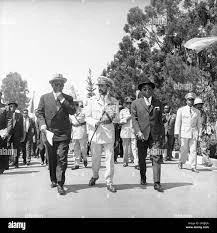 After completing his second term as President, Theodore Roosevelt embarked on a safari to Africa. This expedition was a significant event in his post-presidential life and contributed to his legacy as a conservationist and adventurer.
After completing his second term as President, Theodore Roosevelt embarked on a safari to Africa. This expedition was a significant event in his post-presidential life and contributed to his legacy as a conservationist and adventurer. -
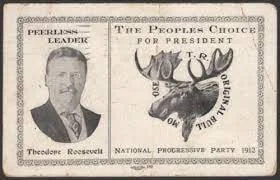 Theodore Roosevelt ran for the presidency in the 1912 election as the candidate of the Progressive Party, also known as the Bull Moose Party. Despite his popularity and the party's significant impact on the election, he did not win the presidency.
Theodore Roosevelt ran for the presidency in the 1912 election as the candidate of the Progressive Party, also known as the Bull Moose Party. Despite his popularity and the party's significant impact on the election, he did not win the presidency.